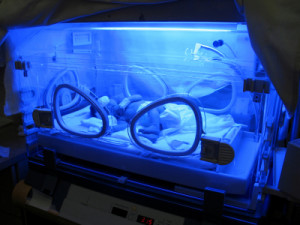 Infant brain injury can occur during delivery. The risk for brain injury can depend on a variety of factors, including many conditions that are common in the United States. When an infant is born, the child’s head is the first body part to enter the maternal birth canal. As a result, the infant’s head experiences more intense pressure than the rest of the child’s body during the birthing process. The additional pressure placed on the fetal head can result in swelling or bruising, which may lead to more severe fetal brain injuries.
Infant brain injury can occur during delivery. The risk for brain injury can depend on a variety of factors, including many conditions that are common in the United States. When an infant is born, the child’s head is the first body part to enter the maternal birth canal. As a result, the infant’s head experiences more intense pressure than the rest of the child’s body during the birthing process. The additional pressure placed on the fetal head can result in swelling or bruising, which may lead to more severe fetal brain injuries.
Types of Brain Injuries
Infant brain injuries can range from mild to severe. While some brain injuries only cause temporary damage, pain, or discomfort for the child, other brain injuries result in permanent damage. This permanent damage that results from fetal brain injury during delivery may cause mobility, communicative, or cognitive problems for the rest of the child’s life.
Cephalohematoma
Cephalohematoma is a medical condition where the infant is bleeding beneath his or her cranial bones. This may occur as a result of birth complications or infant head injury. The bruising that results typically appears within hours after the delivery, and a lump may form on the newborn baby’s head at the location of the cephalohematoma. If the infant’s body reabsorbs the blood trapped beneath the cranial bones after this injury, more severe brain injury complications may occur.
Delivery-induced cephalohematomas vary in size. Depending on the cephalohematoma’s size, it may require two weeks to three months for the brain injury to fully heal. In serious cases of birth-induced cephalohematoma, the area of cranial bleeding may be very large. This can result in jaundice for the infant, as the baby’s red blood cells break down and begin to harm the infant’s liver during the healing process.
Negligent Use of Surgical Forceps
Childbirth may cause intense pressure on the infant’s facial nerves. This is a natural result of babies being birth head-first though the maternal birth canal. However, surgical forceps misuse can place very specific and severe pressure on the baby’s cranial region. As a result, negligent use of surgical forceps can lead to facial and cranial nerve injury for the baby. This nerve damage may be temporary or permanent. The determining factor of the degree in cranial nerve damage is the doctor’s prompt and accurate response to the suspected brain injuries.
Facial Nerve Damage
Facial nerve damage may occur as the result of forceps misuse during delivery. This condition may lead to serious muscle weakness on one side, or both sides, of the baby’s face. Facial muscle weakness can lead to temporary or permanent facial paralysis. The face may become immobilized and the child’s eyes may not open or close fully.
Facial nerve damage will cause facial abnormalities and problems with facial symmetry. This type of cranial injury requires multiple medical treatments and weeks to recover. However, many children do recover from this form of nerve damage.
Scalp Tissue Swelling
During birth, bone fractures may occur on or near the baby’s cranial region. For example, the infant may suffer from a broken collarbone after an extremely arduous delivery. This can cause swelling in the surrounding regions. “Caput succedaneum” is the medical term used to describe temporary swelling of the baby’s soft scalp tissues. This is a direct result of a long labor and delivery; however, infant scalp tissue swelling usually heals completely within a few months of the birth brain injury.
Additional Birth Nerve Damage
Additional birth brain injuries may occur as a result of hypoxia, or lack of oxygen for the fetus, and direct nerve damage. Hypoxia can lead to permanent, life-long brain nerve damage and disorders such as cerebral palsy. Direct nerve damage may occur through bruising or scarring around the infant’s cranial region and brachial plexus. This can leads to Erb’s palsy or Klumpke’s palsy. Fetal distress may cause inhalation of amniotic fluid and meconium, resulting in meconium aspiration syndrome. Finally, bacteria and germs that the infant may come into contact with at the hospital shortly after delivery may result in severe conditions, such as meningitis.
Sources:
“Cephalohematoma.” Newborn Nursery at LPCH. <http://newborns.stanford.edu/PhotoGallery/Cephalohematoma1.html>.
Huang, Benjamin, and Mauricio Castillo. “Hypoxic-Ischemic Brain Injury: Imaging Findings from Birth to Adulthood.” RadioGraphics: The Journal of Continuing Medical Education in Radiology. 2013. <http://radiographics.rsna.org/content/28/2/417.full>.
